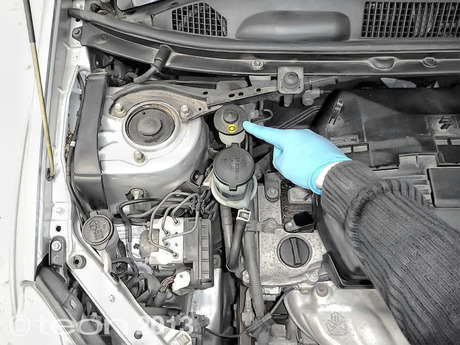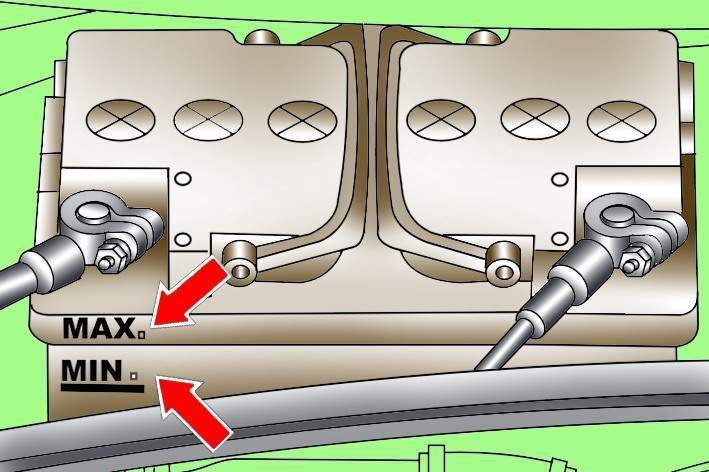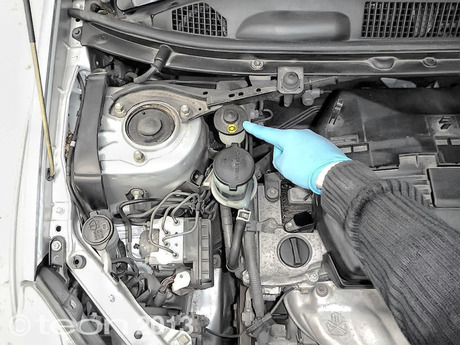Tool:
- Straight ring wrench
- rags
Parts and consumables:
- glass vessel
- transparent hose
Notes:
Any hydraulic system works normally if air is removed from it.
When bleeding, add only clean brake fluid recommended by the manufacturer.
Never reuse fluid that has leaked from the hydraulic clutch.
Brake fluid is hygroscopic, meaning it absorbs moisture from the air. Therefore, liquid stored for a long time in an open container is not recommended.
If hydraulic fluid leaks continuously or air enters the hydraulic system, determine the cause and location of the leak and repair the damage.
During the pumping process, make sure that the brake fluid level does not fall below the middle of the brake system reservoir (in the latest versions of the Toyota RAV4, a common reservoir is provided for the hydraulic clutch and brakes).

1. Remove the protective cap from the bleeder on the clutch slave cylinder and clean the bleeder with a rag.
2. Put one end of the transparent hose on the bleeder fitting, lower the other end of the hose into a glass vessel filled with brake fluid by 5–7 cm.
3. The assistant must press the clutch pedal, and with the pedal depressed, unscrew the bleeder valve by half a turn using a spanner wrench.

4. Continuing to press the pedal, force the fluid in the system together with air through the hose into a container. After the pedal has reached its lowest position and fluid has stopped flowing through the hose, screw the bleeder in until it stops.
Note:
Repeat these operations until the air flow from the hose stops.
5. Keeping the pedal depressed, tighten the bleeder screw until it stops and remove the hose from the bleeder screw.
6. Wipe the bleeder port with a clean cloth and install the protective cap.
Source: http://www.navigator.mn/toyota-rav4/stseplenie/udalenie-vozduha-iz-gidravlicheskogo-privoda-stsepleniya.html






![2 generation [2000 - 2003]](/uploads/toyota-rav-4-ii-11109.jpg)
![3 generation [2005 - 2009]](/uploads/Toyota_RAV_4_-_2006_-_2009_.jpg)
![4 generation [2012 - 2015]](/uploads/Toyota_RAV_4_-_2012-2015_.jpg)
